Session Abstracts:
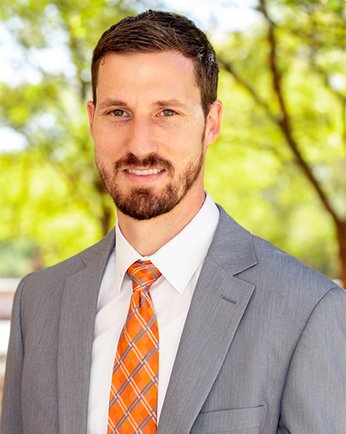
Associate Professor
Auburn University
Improving the Predictability of Building-Scale Wind Performance Coupling Physics-Based and Machine Learning Approaches
Co-Authors: Jordan Nakayama (Auburn University)
Abstract: The United States has been struck by seven major hurricanes since 2017, causing hundreds of billions in economic losses. The brunt of this damage is borne by low-rise housing units which provide residences for nearly 41 million people living in coastal Atlantic counties. Since 2017, the Structural Extreme Events Reconnaissance (StEER) network has been funded by the National Science Foundation to capture perishable data documenting the performance of the built environment following hurricanes. The authors will present data-driven findings from a subset of this dataset of performance assessments, published on DesignSafe, demonstrating the complex relationships between established causal features and observed damage. The authors will contextualize these empirical findings with similar analyses of a synthetic reconnaissance dataset, derived from hurricane fragilities embedded within the NHERI SimCenter R2D tool. The methodology demonstrates a framework for better integration between physics-based and machine learning based approaches to modeling structural impacts of hurricanes and other windstorms.

Assistant Professor
Texas A&M University-Corpus Christi
Coupled CFD-DEM Modelling of Bio-stabilized Coastal Sand Dunes in Storm Surge
Co-Authors: Ekansh Agarwal (Texas A&M University-Corpus Christi)
Abstract: Coastal sand dunes play a vital role in shielding shorelines from wave impact and storm surges. However, their effectiveness is diminishing due to climate change, rising sea levels, and more frequent extreme weather. Traditional stabilization methods often fall short of being both sustainable and environmentally friendly. Recent research has explored bio-stabilization techniques, such as bio-remediation and bio-cementation, which offer promising, eco-friendly alternatives. Despite successful field and lab studies showing improved stability in bio-stabilized dunes, there is a lack of detailed numerical models to fully replicate these results and provide more theoretical insights into the performance of bio-stabilized dunes. This research introduces a hybrid modeling approach that combines Computational Fluid Dynamics (CFD) with Discrete Element Modelling (DEM). By using CFD to simulate hydrodynamic forces and DEM to model particle interactions and erosion, our method provides a detailed understanding of dune stability amidst storm surge on both micro- and meso- scales. We evaluate the performance of bio-stabilized dunes under various wave conditions, including extreme scenarios, using both short-term and long-term simulations. The results are compared with laboratory wave flume experiments to assess the impact of bio-stabilization on dune integrity. This research presents a robust CFD-DEM framework for evaluating bio-stabilization techniques, highlighting the importance of integrating geotechnical and coastal engineering perspectives to develop more effective and sustainable coastal protection strategies.
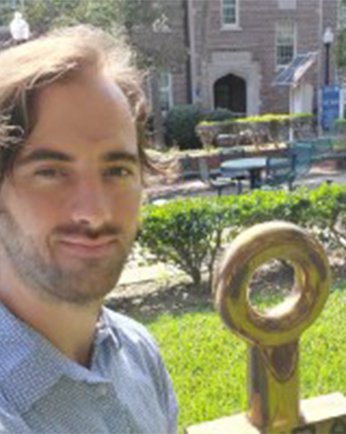
Graduate Student Researcher
University of Florida
BuiLD-FORCE: Building-Level Damage Forecasting of Regional Coastal Events
Co-Authors: Arthriya Subgranon (University of Florida), Maitane Olabarrieta (University of Florida), John C. Warner, (US Geological Survey), Joseph B. Zambon (Fathom Science), Christopher R. Sherwood (US Geological Survey), Mark Carson (US Geological Survey), Emma Manzella (US Geological Survey), Muhamad F. Geonova (Louisiana State University), Yanda Ou (Louisiana State University), Ruoying He (Fathom Science), Jennifer Warrillow (Fathom Science), Z. George Xue (Louisiana State University), Daoyang Bao (Louisiana State University), Eli Hunter (Rutgers University), James D. Doyle (US Naval Research Laboratory), and Jonathan R. Moskaitis (US Naval Research Laboratory)
Abstract: While hurricane hazards are modeled at high resolution for real-time forecasts, forecasting hurricane impacts to infrastructure is less common, and typically aggregated at the census tract level. In this work, NHERI SimCenter tools were used to develop inventories of single-family homes along the US Gulf and Atlantic coasts, enabling damage predictions at the parcel level as hurricanes approach. Building and Infrastructure Recognition using AI at Large-Scale (BRAILS) models were retrained to obtain desired roof and occupancy classes and used to compile attributes for coastal homes from Texas to North Carolina. We then developed a novel, real-time residential building damage prediction framework: Building-Level Damage Forecasting of Regional Coastal Events (BuiLD-FORCE). BuiLD-FORCE first automatically checks for active disturbances from the National Hurricane Center (NHC). Next, the NHC hurricane track is obtained to identify forecasted impact regions. The BRAILS-generated inventories in those regions are combined with hazard intensity from the Coupled Ocean-Atmosphere Mesoscale Prediction System (COAMPS) and Coupled-Ocean-Atmosphere-Waves-Sediment Transport (COAWST) models, interpolated to house locations. Finally, geospatial, socioeconomic, and fragility features are compiled for the houses in the inventory in a tabular dataset that is fed into a random forest classifier. The classifier was trained on reconnaissance data from past hurricanes, and outputs a discrete damage state at the parcel level. This framework presents one of few existing attempts to predict hurricane damage to individual houses, and one of the first systems to do so concurrently with hurricane forecasts. BuiLD-FORCE will allow for forecasting impacts at high resolution while examining forecast uncertainty propagation.

Graduate Student Researcher
Oregon State University
Connectivity and Coastal Infrastructure Performance Following a Cascadia Subduction Zone Multi-Hazard Event
Co-Authors: Daniel Cox (Oregon State University), Dylan Sanderson (NIST), and Jenna Tilt (Oregon State University)
Abstract: The Cascadia Subduction Zone (CSZ) ground shaking and tsunami inundation will cause significant damage to the natural, built, and social environments which are composed of interconnected infrastructure and human systems. Coastal communities are at risk of becoming cut off from inland areas and from one another through potential “islanding” because of the loss of functionality of these systems. The resilience of 18 coastal communities along the CSZ is quantified by metrics based on the performance of built infrastructure (e.g. transportation networks and building integrity) after the disaster and the resulting access to essential facilities and services or community-defined assets and employment locations. The assessment incorporates publicly available data, participatory mapping, and a multi-scale damage-recovery model. The model evaluates resilience as a function of access to or from regional points of interest (e.g., hospitals, airports), local points of interest (e.g., schools, fire stations), and individual points of interest (e.g. community centers, places of worship) identified by Latinx coastal residents. The disparities in connectivity metrics are highly dependent on points of interest accessible through long-distance trips due to limited regional routes as opposed to local networks with greater redundancies in the network and in possible alternate facilities. This work includes preliminary consideration of additional hazards (e.g. landslides) and of access resulting from multiple interacting infrastructure systems (building functionality in congress with road functionality) to better develop a holistic view of potential risks and timescales for recovery.
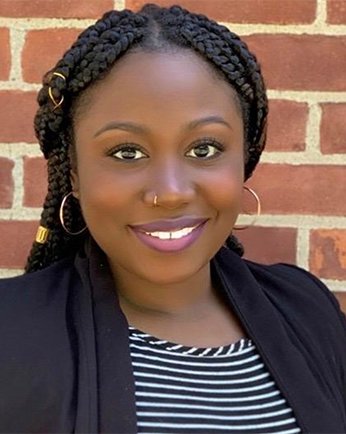
Graduate Student Researcher
Tufts University
Building Damage Assessment and Retrofitting Prioritization in Massachusetts Using High Resolution Site Characterization Map
Co-Authors: Laurie G Baise (Tufts University), Hooman Shirzadi (Tufts University), and Babak Moaveni (Tufts University)
Abstract: In low-seismic regions such as Massachusetts, assessing the damage state of existing buildings and prioritizing remediation efforts can be complex due to limited data. This study uses high-resolution site characterization data to produce a detailed damage assessment for an inventory of buildings across the state. This project reflects an integrated approach that leverages regional high-resolution subsurface data, detailed building stock information, and recently published national seismic hazard maps. The high-resolution site characterization data is based on a detailed depth-to-bedrock map of the state paired with sediment velocity models by geologic unit. The building inventory includes structural system, age, and building type. By combining these high-resolution datasets with the HAZUS-informed capacity curves and fragility functions by building type, we provide a comprehensive evaluation of damage states to facilitate informed decision-making based on the assessed risks. Additionally, the study considers the risk patterns to identify underserved areas with significant needs for immediate action. This approach ensures that remediation efforts are not only informed by technical assessments but also by equity and community impact, aiming to optimize building safety and resilience while addressing disparities in resources. Our findings underscore the importance of quantifying building safety and resilience, even in areas with historically low seismic activity. Our results contribute to the quantification of seismic vulnerability of buildings in a low-seismic region using methods that are consistent with the probabilistic understanding and dissemination of damage and loss.

Graduate Student Researcher
University of Oklahoma
Urban Fire and High Wind Impacts on Electrical Distribution Network Performance and Restoration in the Southern Great Plains
Co-Authors: P. Scott Harvey Jr (The University of Oklahoma) and Kanthasamy K. Muraleetharan (The University of Oklahoma)
Abstract: Increasingly frequent wildfires driven by fire weather conditions have burned millions of acres and have caused extensive infrastructure damage, leading to significant restoration costs and efforts to minimize the financial and community impact. This study examines the impact of urban fires and high winds on electrical distribution networks in the Southern Great Plains, where climate change and evolving land use have increased the risk to infrastructures. As a multihazard analysis, this study addresses both wildfire outbreaks and wind damage, utilizing a resilience framework developed by Oklahoma NSF EPSCoR researchers to assess the risk of power loss in Oklahoma's electrical network. Component fire fragility curves are used to evaluate the vulnerabilities of power poles and lines, while pole-wind fragility curves identify critical points in the network where wind-damaged poles could cause an ignition. Urban fire simulations using FARSITE, combined with Monte Carlo parameter estimation for region-specific data, provide dynamic wildfire simulations. A repair crew scheduling model is integrated to estimate power restoration times following a disruption in the network. The study also analyzes the resilience curve and overall network performance based on customer power restoration times. This multihazard approach not only highlights critical vulnerabilities but also supports the development of strategies to enhance network resilience and mitigate the effects of wildfire outbreaks on electrical infrastructure.
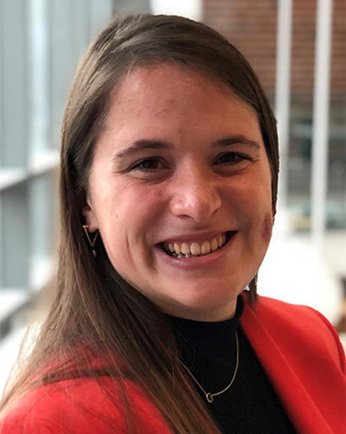
Research Assistant Professor
University of Houston
Equity-Based Retrofitting to Mitigate Outage Impact Risk for Galveston’s Electric Distribution Network
Co-Authors: Eun Jeong Cha (University of Illinois Urbana-Champaign), Walter Peacock (Texas A&M University), and Nathanael Rosenheim (Texas A&M University)
Abstract: Effective management of electric distribution networks (EDN) is critical for communities to achieve disaster resilience and prevent adverse impacts on a community. Retrofitting is a common measure undertaken to reduce the disruptions caused by hazards. Selection of components for retrofitting is often governed by system performance measures which routinely aim to provide an equal level of service to all customers (i.e., distributional equity). However, disproportionate impacts often occur and accumulate among populations with greater social vulnerability (i.e., minority, elderly, etc.), particularly due to infrastructure outages. Component selection for retrofitting can also be structured to reduce outage impact inequities (i.e., restorative equity). Retrofitting under both equity paradigms has scarcely been investigated and is supported by few metrics. We developed an equity metric derived upon Theil’s T which enables us to conduct retrofitting for Galveston TX’s EDN relative to a wind hazard for both equity paradigms and evaluate each retrofit scheme’s impact on equity. The metric benchmarks both service provision differences between vulnerable and non-vulnerable groups (i.e., restorative inequity) and differences across entire community (i.e., distributional). Equity-based retrofitting is conducted across multiple retrofit degrees to inform the performance gains. The investigation is also conducted across multiple infrastructure quality assignments since infrastructure quality is not often available and across multiple community characterizations to account for uncertainty in high resolution sociodemographic characterization. Simulations combining all investigated variations reveal that a restorative equity-based retrofit prioritization for Galveston’s EDN is more effective at mitigating both distributional and restorative inequity over a distributional equity-based prioritization.
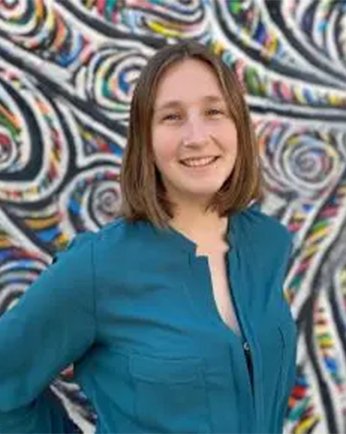
Graduate Student Researcher
Stanford University
Combining exposure data and vulnerability models for regional multi-hazard risk assessment
Co-Authors: Jack Baker (Stanford University)
Abstract: There is increasing movement in hazard risk research toward multi-hazard risk, considering many independent and cascading hazards that affect an area. Multi-hazard risk analysis requires a large amount of compatible input data on exposure and vulnerability of assets to each hazard. This work presents a multi-hazard analysis that brings together exposure and vulnerability data from multiple sources for a case study of Alameda, California. These data are applied to quantify the risk from coastal flooding, tsunami, and earthquake, both ground shaking and liquefaction, under varying amounts of sea level rise. Challenges for regional assessment include a lack of necessary exposure data, limited vulnerability functions for different structural types, and application of risk analysis to frequent events. We overcome these challenges with a combination of exposure datasets, combined vulnerability functions, and output metrics that reflect the different nature of rare and frequent hazards. The limitation remains that we consider only small residential buildings. We highlight the need for compatible and accurate exposure and vulnerability data for multi-hazard risk assessment.

Postdoctoral Scholar
ETH Zurich
Application Programming Interfaces For Integrating Infrastructure Models Into A Regional System-Of-Interdependent-Systems Disaster Recovery Simulator
Co-Authors: Jinyan Zhao (UC Berkeley), Sina Naeimi (UC Berkeley), Tianyu Han (UC Berkeley), Barbaros Cetiner (UC Berkeley), Adam Zsarnóczay (Stanford University), Frank McKenna (UC Berkeley), Matthew DeJong (UC Berkeley), and Bozidar Stojadinovic (ETH Zurich)
Abstract: The next frontier in the development of catastrophe modeling software is simulating post-disaster recovery. Regional recovery simulators aim to enable more reliable estimates of the time needed for infrastructure systems and buildings to achieve functional recovery, guide actions to enhance community resilience, and reduce uncertainty in indirect loss assessments. Functional and resource interdependencies among assets are crucial for accurate regional recovery assessment. The pyrecodes open-source software for regional recovery modeling captures such interdependencies by simulating the flow of resources among assets, conditioning their ability to operate and recover on their resource demand fulfillment at each time step of the simulated recovery time-stepping process. To simulate resource flows, such as the flow of water or electric power, system-specific simulators that capture the physical laws and characteristics of each infrastructure system are required. This work introduces application programming interfaces (APIs) that integrate independent infrastructure flow simulators into the pyrecodes system-of-systems recovery simulator. The benefit of these APIs is the ability to refine infrastructure system simulators or introduce new ones to model development of urban regions and change of technologies without dependencies on the system-of-systems recovery simulation engine. The integrated recovery modeling of interdependent systems is demonstrated through a post-earthquake recovery simulation of Alameda Island, CA. REWET is used to assess water flow in damaged water networks, while the residual demand traffic assignment simulator is used to evaluate traffic flow in damaged road networks. pyrecodes simulates the recovery of the building stock and informs the water and traffic simulators on resource demand change due to building damage and recovery.